Wondering how to remove resin from plastic? Resin sticks like glue and, if you use the wrong method, you might end up damaging your plastic.
To remove resin from plastic, start by using isopropyl alcohol (IPA), acetone, or gently heating it. IPA works well on fresh resin, acetone handles tougher spots, and a heat gun makes resin soft and easier to scrape away.
It helps to know what kind of plastic you're dealing with because different plastics react in their own ways to cleaners. Skip harsh chemicals and rough tools. They can leave ugly marks that never go away.
Once you’ve softened the resin, carefully lift it away with a plastic scraper or even your fingernail. This keeps your plastic looking good and saves you some headaches.
Read to learn more tips for those stubborn resin spots.
How To Remove Resin From Plastic Easily

Resin is a pain to get off plastic, and it really depends on whether it's wet or already hardened. If you know how resin bonds to different plastics, you'll have a much better shot at removing it without wrecking your stuff.
Difference Between Uncured Vs. Cured Resin
Uncured resin is still sticky and soft. You can usually wipe it up with a cloth and some rubbing alcohol or acetone before it sets up.
Act fast. You don't want it to harden on your plastic.
Cured resin, though, is a whole different beast. Once it hardens, you’ll need to scrape it gently or maybe reach for stronger solvents.
Be careful with softer plastics like polyethylene and polypropylene. They scratch and melt easily, so go easy.
Epoxy resin is super common and cures up in just a few hours. Once it’s set, it forms a tough, sticky layer that’s hard to budge.
Want to learn more about drying times? Check out our article How Long Does Epoxy Resin Take to Dry: Epoxy Cure Time for all the details.
Why Resin Sticks To Plastic And How It Bonds
Resin grabs onto plastic because it’s sticky by nature. When it cures, it locks onto all those tiny bumps and grooves on the plastic’s surface.
It bonds tighter to rougher plastics like polystyrene, but not as much to smoother stuff like polyethylene. Some plastics barely let the resin grip at all.
Basically, the resin hardens into a rigid network and attaches to the surface. That’s why you often need a mix of heat, solvents, or scraping to get it off without messing up the plastic.
Remove Uncured Resin From Plastic Fast

If you spot uncured resin or epoxy, move quick. Gentle tools and stuff you’ve already got at home can save your plastic from a sticky fate.
Acting fast really does make cleanup so much easier.
Wipe Or Scrape With A Soft Plastic Tool
When resin’s still wet, you want to get it off right away. Grab a soft plastic scraper or an old credit card and gently lift the resin up.
Don’t use metal tools. They’ll scratch your plastic for sure. Work slowly, scraping off small bits at a time.
Be careful not to push the resin deeper into any grooves. After scraping, a dry cloth helps clear away the loose bits.
If you catch it early, this method works great. Once you’ve wiped or scraped, go over the spot with a solvent to get rid of any sticky leftovers.
Dab Isopropyl Alcohol For Quick Resin Breakdown
Isopropyl alcohol (rubbing alcohol) is perfect for dissolving uncured resin. Dampen a clean cloth or cotton ball with at least 70% isopropyl alcohol.
Gently dab or rub the resin area and let the alcohol work for a couple minutes if it’s still a bit tacky. Sometimes you need to let it sit a bit longer, but don’t soak the plastic—warping is no fun.
After that, wipe or scrape off the softened resin. Always test the alcohol on a hidden spot first so you don’t end up with discoloration.
Use Heat (Hair Dryer) To Soften Then Scrape
A hair dryer on medium heat can help soften uncured or tacky resin. Hold it a few inches away and move it around for a minute or two until the resin feels warm.
Don’t overdo it—too much heat can warp your plastic or even set the resin faster. Once it’s soft, use a plastic scraper or cloth to lift it off.
This trick works especially well for thick or uneven resin spots. Heat makes scraping easier and helps avoid scratches.
Afterward, wipe the area with isopropyl alcohol to get rid of any residue.
Remove Cured/Hard Resin Without Damaging Plastic
Cured resin is stubborn, but you can get it off without ruining your plastic. Soften or weaken the resin first, then use gentle scraping or chipping. Heat, solvents, or even cold can make the job way easier.
Warm With Heat Gun, Then Gently Scrape
A heat gun on low or medium can soften cured epoxy or resin stuck on plastic. Keep the gun moving so you don’t overheat one spot.
Once the resin is warm and a bit flexible, use a plastic scraper or putty knife at a slight angle. Take your time as forcing it can scratch the plastic.
The softened resin lifts off easier this way. Just don’t use too much heat, or you’ll risk warping or melting the plastic.
Apply Solvent: Alcohol → Acetone/Test Area First
If heat isn’t an option, try solvents like isopropyl alcohol first. Dab some on a cloth and apply it to the resin. This often softens the surface without hurting most plastics.
If alcohol doesn’t cut it, move to acetone. But always test it on a hidden spot first. Acetone can cloud or melt some plastics.
Let a cloth soaked in acetone sit on the resin for 20-30 minutes. Then gently scrape or rub the resin off.
Wear gloves and work somewhere with good airflow. Solvents can be rough on your skin and lungs.
Freeze Small Items To Make Resin Brittle, Then Chip It Off
For small plastic parts, freezing makes cured resin brittle and much easier to remove. Pop the item in the freezer for at least an hour, more if it’s thick.
Once the resin is brittle, use a plastic scraper or your fingernail to chip it off.
If you have freeze sprays, you can use those too. Spray in short bursts and chip the resin once it’s brittle. Don’t freeze the plastic too quickly or unevenly, or you might crack it.
Tools & Solvents: What Works Best

Choosing the right solvent and tools saves you time and keeps your plastic safe. Some chemicals work well, others just make a mess—or worse, damage your stuff.
Compare IPA, Acetone, Vinegar, Plastic-Safe Solvents
Isopropyl alcohol (IPA) is a gentle solvent that breaks down resin without harming most plastics. It’s easy to find and not as harsh as acetone, though it can take longer on hard resin.
Acetone works fast but can melt or cloud some plastics. Only use it if you know your plastic can handle it, and make sure the room’s well ventilated—acetone fumes are no joke.
Vinegar is super gentle and natural but doesn’t do much for hardened resin. It’s best for sticky, fresh messes and is safe for almost any plastic.
Chemical adhesive removers and paint thinners are all over the place. Look for ones that say “plastic-safe” and always test a hidden spot before you go all in.
|
Solvent |
Effectiveness |
Plastic Safety |
Notes |
|
Isopropyl Alcohol |
Moderate |
Safe for most plastics |
Slower, non-toxic |
|
Acetone |
High |
Risky for some plastics |
Fast, highly flammable |
|
Vinegar |
Low |
Very safe |
Best for fresh resin |
|
Chemical Removers |
Varies |
Check labels |
Test first, some are harsh |
Use Plastic Razors Or Credit‑Card Scrapers — Reddit Users Recommend Them
Physical tools like plastic razors or old credit cards are lifesavers. They’re stiff enough to scrape but soft enough not to gouge your plastic.
Metal scrapers? Nope. Just asking for scratches.
Go slow and gentle when scraping. If the resin won’t budge, soften it first with a solvent to avoid rubbing too hard.
Plastic scrapers fit into tight spots and curves way better than big tools. Super handy for detail work!
Safety Gear: Gloves, Ventilation, Test Patch
Always put on rubber gloves to keep solvents off your skin. Acetone and chemical removers dry out and irritate your hands fast.
Safety goggles are a must if you’re using strong solvents. You don’t want a splash in your eye.
Work somewhere with good airflow, or just go outside. If fumes get strong, grab a respirator mask that’s rated for solvent vapors.
Before you start, test any solvent on a hidden patch of your plastic. It’s worth the extra minute.
Use whatever personal protective equipment you need and stay safe while you work.
Clean-Up & Aftercare For Plastic Surfaces

Once you’ve finally gotten the resin off, don’t forget to clean and baby your plastic. It keeps everything looking good and helps avoid future damage.
Gently wipe away any leftover debris and check for tiny scratches. Sometimes you might need to buff them out, but hey, at least the resin’s gone.
Wash With Mild Soap And Water
Start by washing your plastic with warm soapy water. Grab a soft cloth or sponge so you don’t scratch the surface.
Mild soap works best. It pulls off leftover resin bits without harming the plastic.
Rinse everything well with clean water. You want to wash away all the soap and debris.
Dry the surface with a soft towel or just let it air dry. This helps you spot any resin stains that might stick around.
Skip harsh chemicals or abrasive pads here. They can leave the plastic cloudy or even damage it.
Polish Scratches With Plastic Polish Or Automotive Wax
If you see small scratches or dull spots after cleaning, reach for some plastic polish or automotive wax. These products fill in the tiny scratches and bring back the shine.
Apply a dab of polish with a soft cloth, rubbing it in gentle circles. Let it dry for a bit, then buff with a clean cloth until it looks glossy again.
Stick to products made for plastic, so you don’t risk damage. Automotive wax can work too—it leaves a protective layer that helps keep stains and scratches away.
Stop Resin Sticks In The First Place
Honestly, preventing resin from sticking is just easier. You can use a few simple tricks and habits to keep resin from bonding where you don’t want it.
These steps make cleanup way less of a headache and help protect your project or mold.
Cover With Plastic Sheet Or Tape
Cover your plastic surface with a plastic sheet or tape to make a barrier. Clear plastic wrap or painter’s tape works well for spots where resin might drip or spill.
Lay the tape or sheet flat—wrinkles can trap resin, and nobody wants that mess. Resin doesn’t really stick to plastic wrap or most tapes, so you can just peel it off after the resin cures. Super handy for work tables, molds, or plastic tools.
Don’t use masking tapes with strong adhesives, though. They might leave sticky residue. Low-tack tape is a better bet for delicate surfaces.
Use Silicone Mats When Working on Projects
Resiners® Non-Slip ResinGuard Silicone Mat
Silicone mats are a resin crafter’s best friend. Resin doesn’t stick to silicone, so you can easily peel off any drips or spills once they’re cured. Place a silicone mat under your workspace to protect surfaces and make cleanup fast and simple.
Use Release Agents (Silicone Spray/Jelly)
Release agents like silicone spray or mold release jelly make a slick barrier on your plastic. They keep resin from bonding tightly, so cleanup is way easier.
Spray or spread a thin, even coat before you pour resin. Let it dry all the way for best results.
Silicone sprays are quick, but release jellies might cover stubborn spots better. These are especially helpful if you’re making resin crafts or casting in reusable molds.
Just double-check that the release agent won’t harm your particular plastic. Some plastics react weirdly, and that’s never fun to discover too late.
Wipe Up Spills Before Resin Cures
Clean up resin spills right away. Resin hardens fast, so grab a cloth or paper towel and wipe up drips as soon as you spot them.
If the resin’s still fresh, use a cloth dampened with isopropyl alcohol or acetone. These break down uncured resin, but always test your surface first—some plastics don’t like solvents.
Dealing with spills quickly saves you from scraping off stubborn patches later. Keep your cleaning supplies close when you work with resin, so you can jump on spills before they set.
Final Thoughts
Removing resin from plastic is all about acting quickly and using the right tools. Wipe up fresh spills with isopropyl alcohol, and for hardened resin, try gentle heat, freezer shock, or a little acetone—testing first to avoid damage.
Use plastic scrapers to prevent scratches, and always wash with warm soapy water and polish afterward to restore shine. For extra protection in future projects, use release agents or silicone mats.
Want to keep your surfaces looking flawless? Read the Best Methods on How to Remove Scratches from Epoxy Resin for more helpful tips!
Frequently Asked Questions on Removing Resin From Plastic
What dissolves dried resin?
Dried resin usually needs strong solvents to break it down. Acetone is one of the top choices for dissolving epoxy and polyester resin. It softens the resin and makes it easier to wipe or scrape off.
Other options like isopropyl alcohol (rubbing alcohol) and denatured alcohol can work, but they’re slower and don’t always cut it for fully cured resin.
Always test any solvent on a hidden spot first—some plastics melt or discolor with strong chemicals.
Will acetone melt my plastic?
Acetone can melt or mess up plastics like polystyrene, ABS, and PVC. But plastics like polyethylene and polypropylene hold up better.
If you’re not sure, do a patch test on a hidden area. Drop a bit of acetone on, wait 5–10 minutes, and see if anything weird happens.
Use acetone with gloves and good ventilation. It’s harsh on skin and the fumes aren’t great.
Don’t let acetone sit on the plastic too long. Wipe it off as soon as the resin loosens up.
Will resin release from plastic?
Sometimes resin pops off plastic surfaces with a smooth or glossy finish. On those, resin might not bond as tightly and can peel or flake away.
If the resin’s still wet or uncured, soap and water or rubbing alcohol might do the trick. Once it’s fully cured, you’ll need heat or solvents to break the bond.
Plastics like polyethylene usually resist strong bonding, but nothing’s totally resin-proof if it cures on there long enough.
Can rubbing alcohol remove resin?
Rubbing alcohol works if the resin’s still soft. It’s gentler than acetone and can clean up fresh or tacky resin with some soaking and a little elbow grease.
On fully cured resin, rubbing alcohol doesn’t do much. It might soften the surface a bit, but it won’t get thick or hard layers off.
Use at least 70% isopropyl alcohol. Soak the spot for 10–15 minutes, then scrape gently with a plastic tool.
Does vinegar get resin off?
Vinegar’s a mild acid, so it might help with sticky or not-quite-cured resin. It’s not strong enough for fully hardened resin, though.
Try warm vinegar on fresh spills, but expect to scrub a bit. It’s safe for most plastics, but don’t expect miracles on tough resin patches.
For stubborn resin, you’ll probably need acetone or a specialized resin remover.
How to remove melted hardened plastic?
Melted, hardened plastic on resin or other surfaces can be a real hassle.
Start by cooling the area until the plastic is completely hard. This makes it way easier to scrape.
Grab a plastic scraper or putty knife and try to lift off as much as you can. Be gentle—you really don’t want to scratch up the surface underneath.
If you’re still seeing residue, try applying heat with a hairdryer or heat gun. Just warm it up enough so the plastic softens a bit, then peel it away.
Don’t overdo it with the heat, though. Too much can mess up the surface below.
For those last stubborn bits, dab on some isopropyl alcohol. Skip the harsh chemicals—they’ll just make things worse by melting or warping the area.
Also Read These Articles:
- Best Resin Molds That Guarantee Perfect Creations
- Is Resin Bad for the Environment? A Crafter’s Guide
- Resin Casting Basics: Everything Newbies Need To Know
- Creative Pressed Flower Art Ideas for Kids & Adults

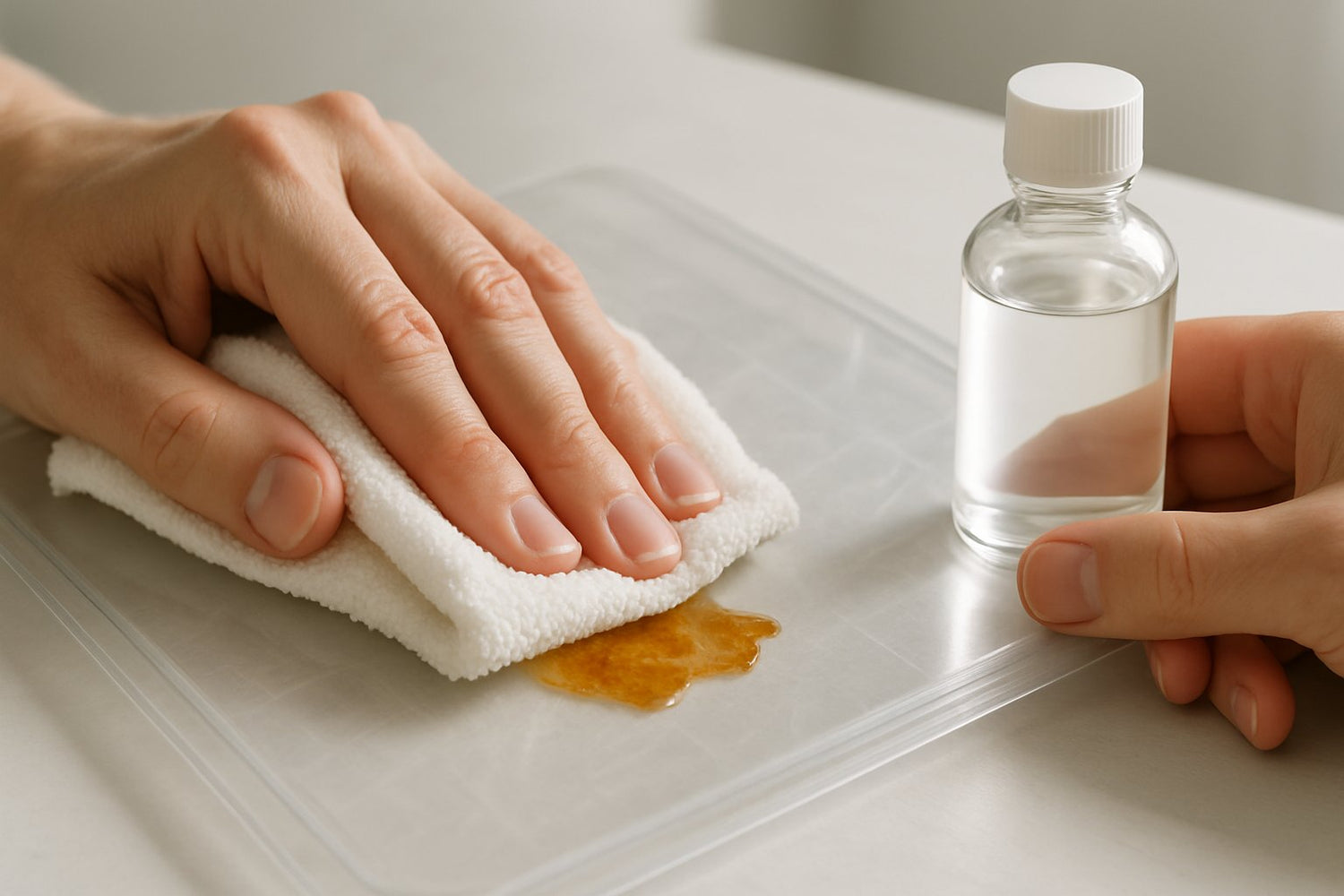

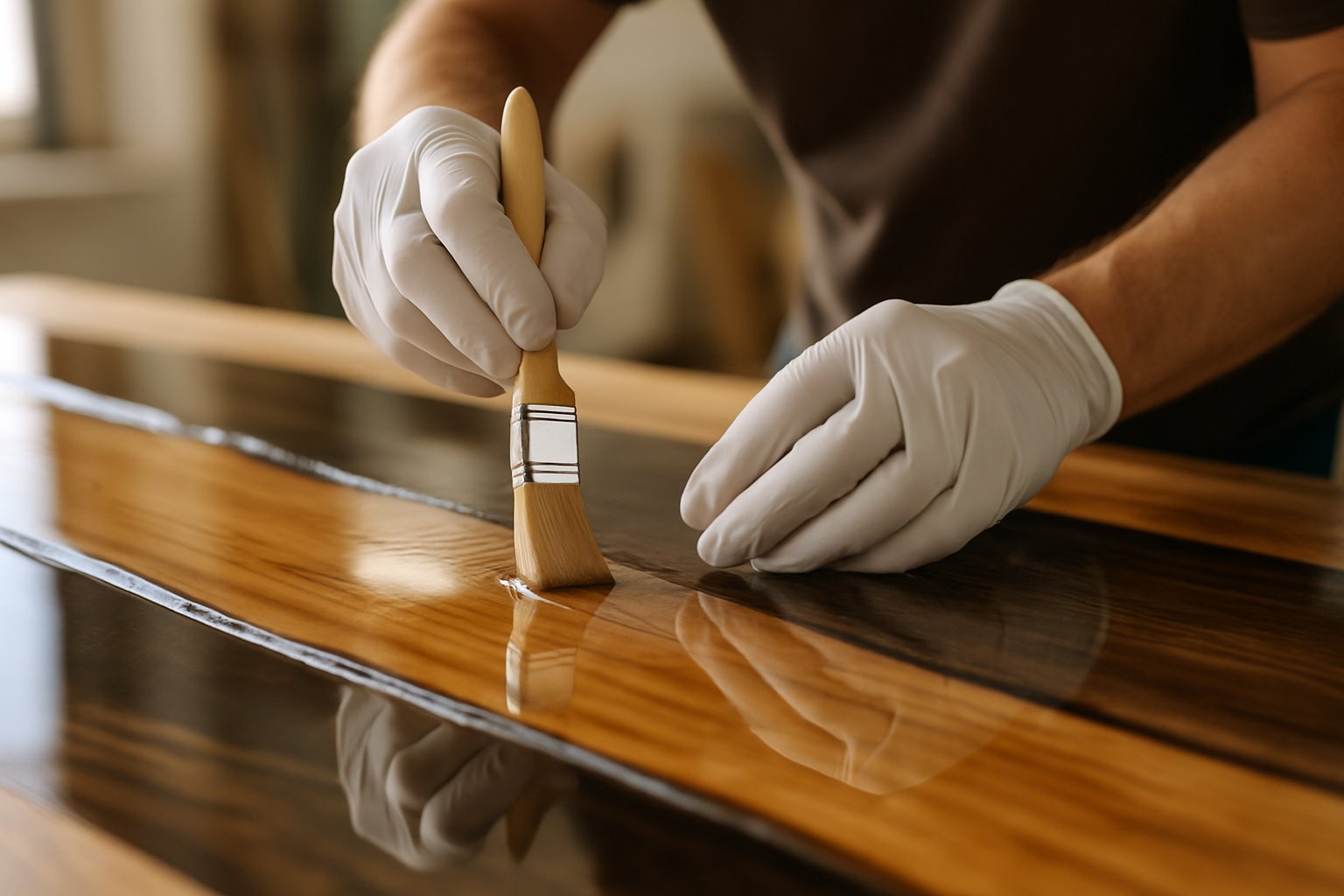

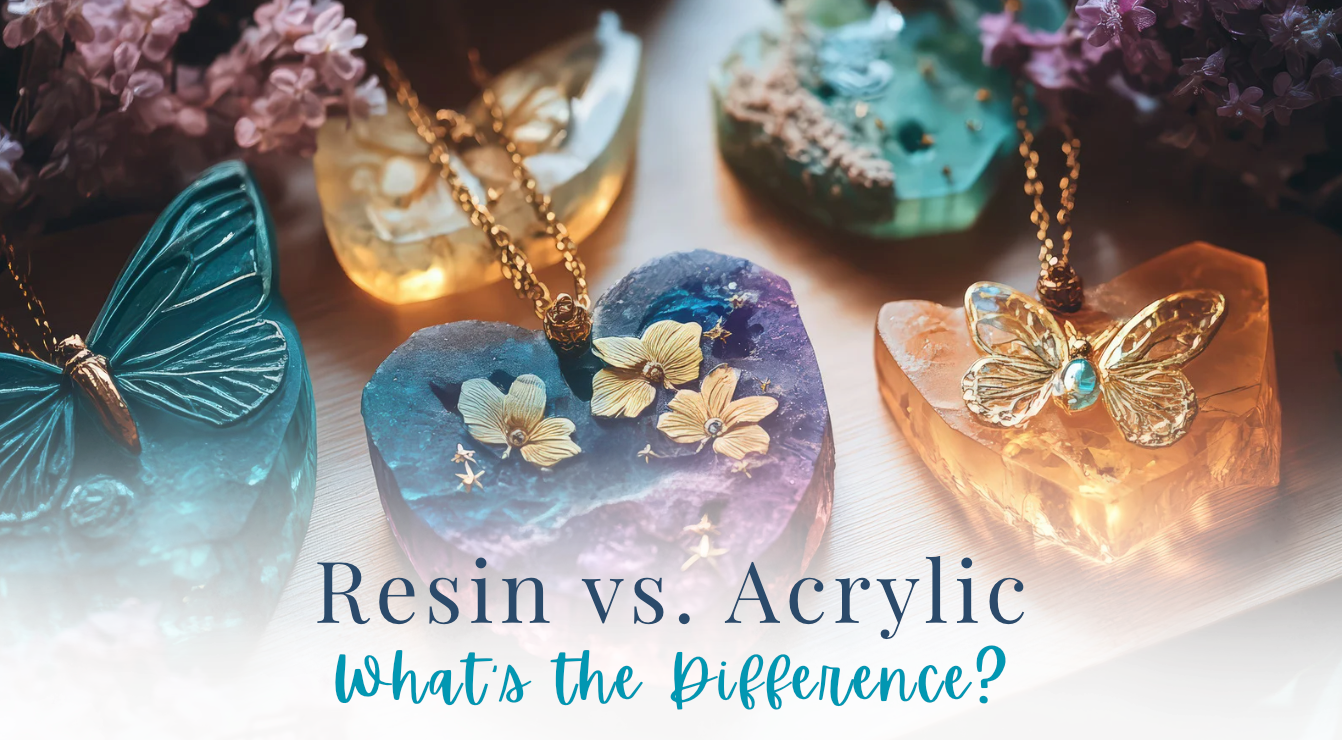
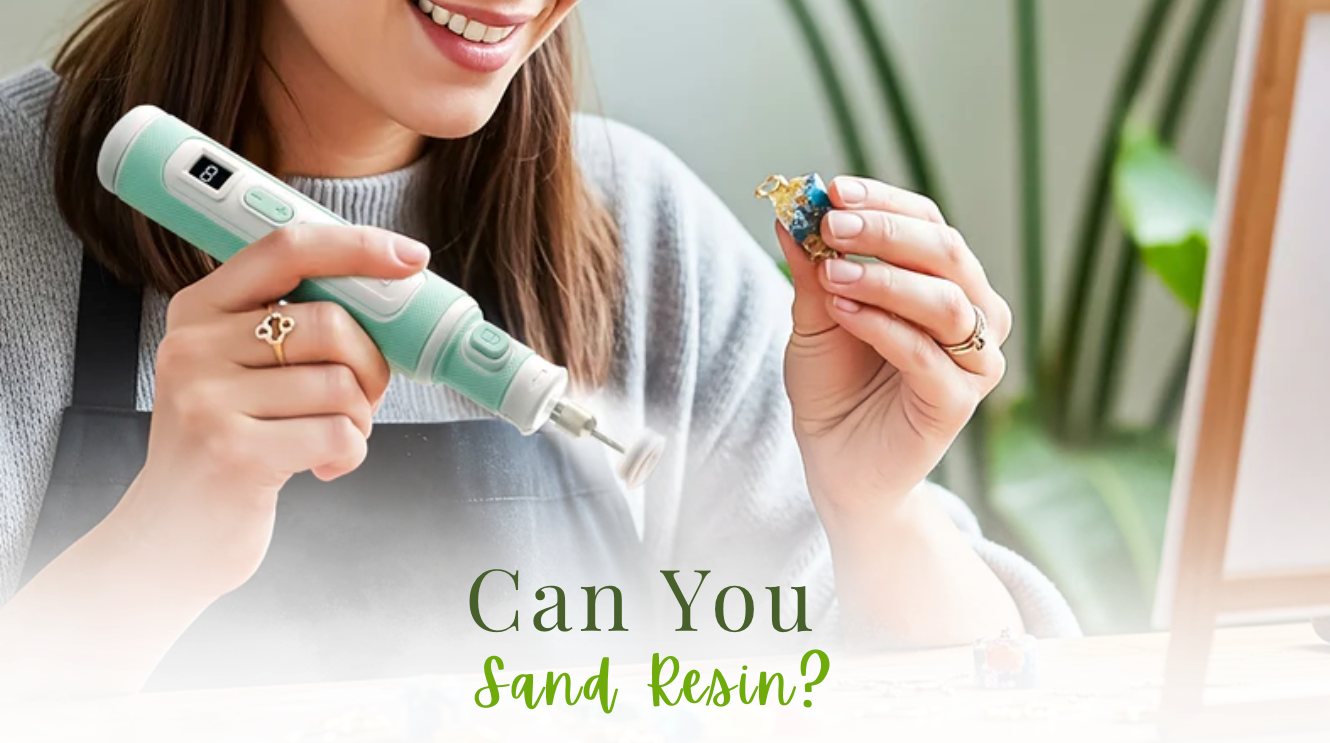
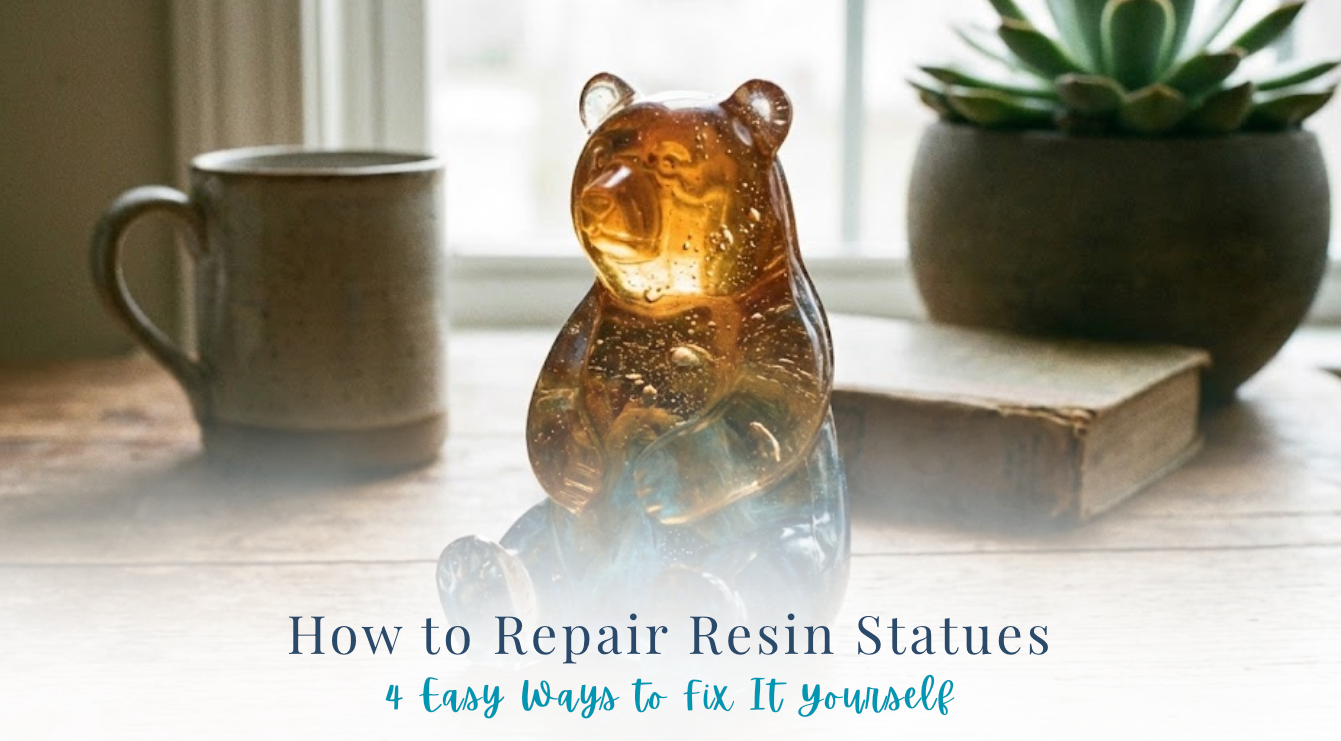

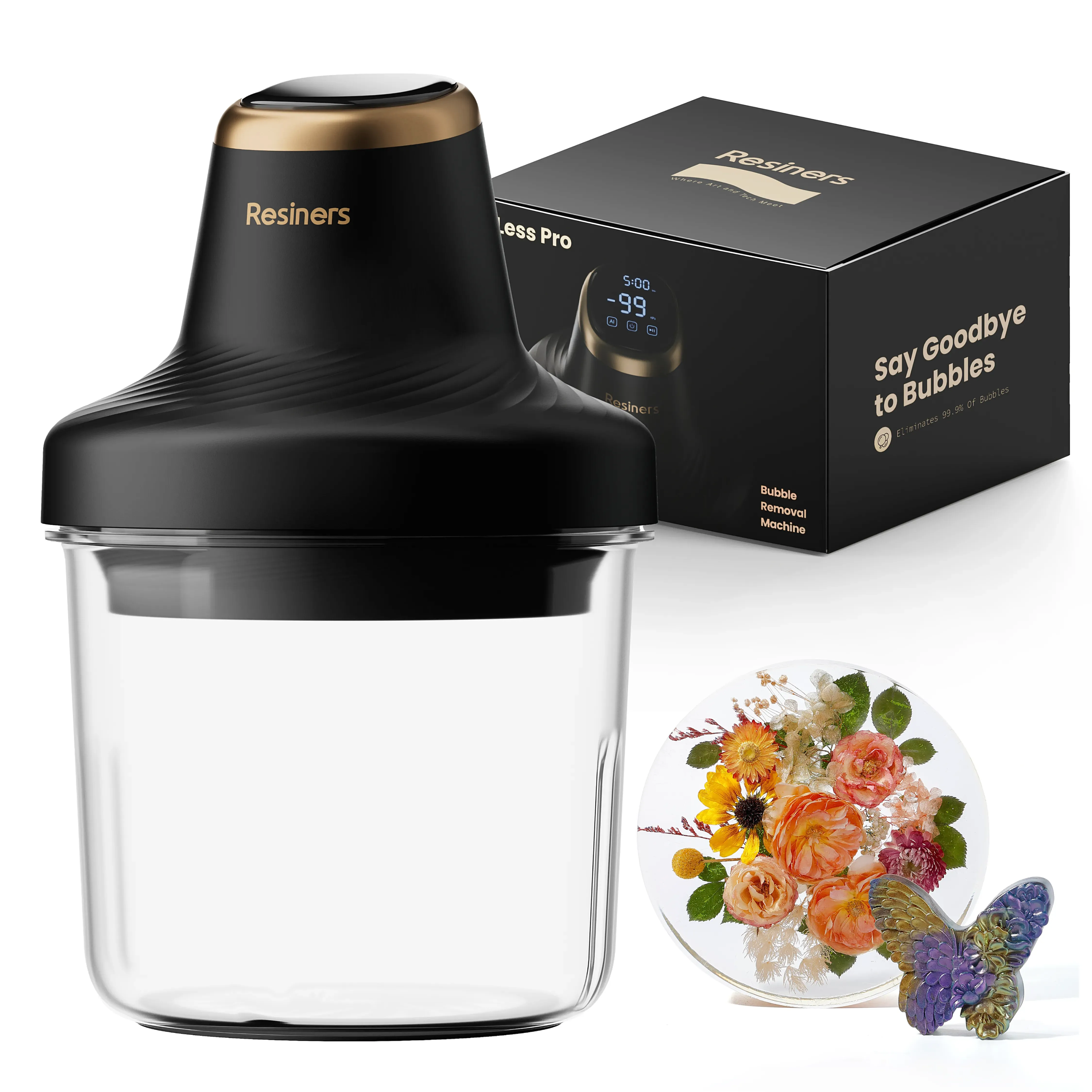
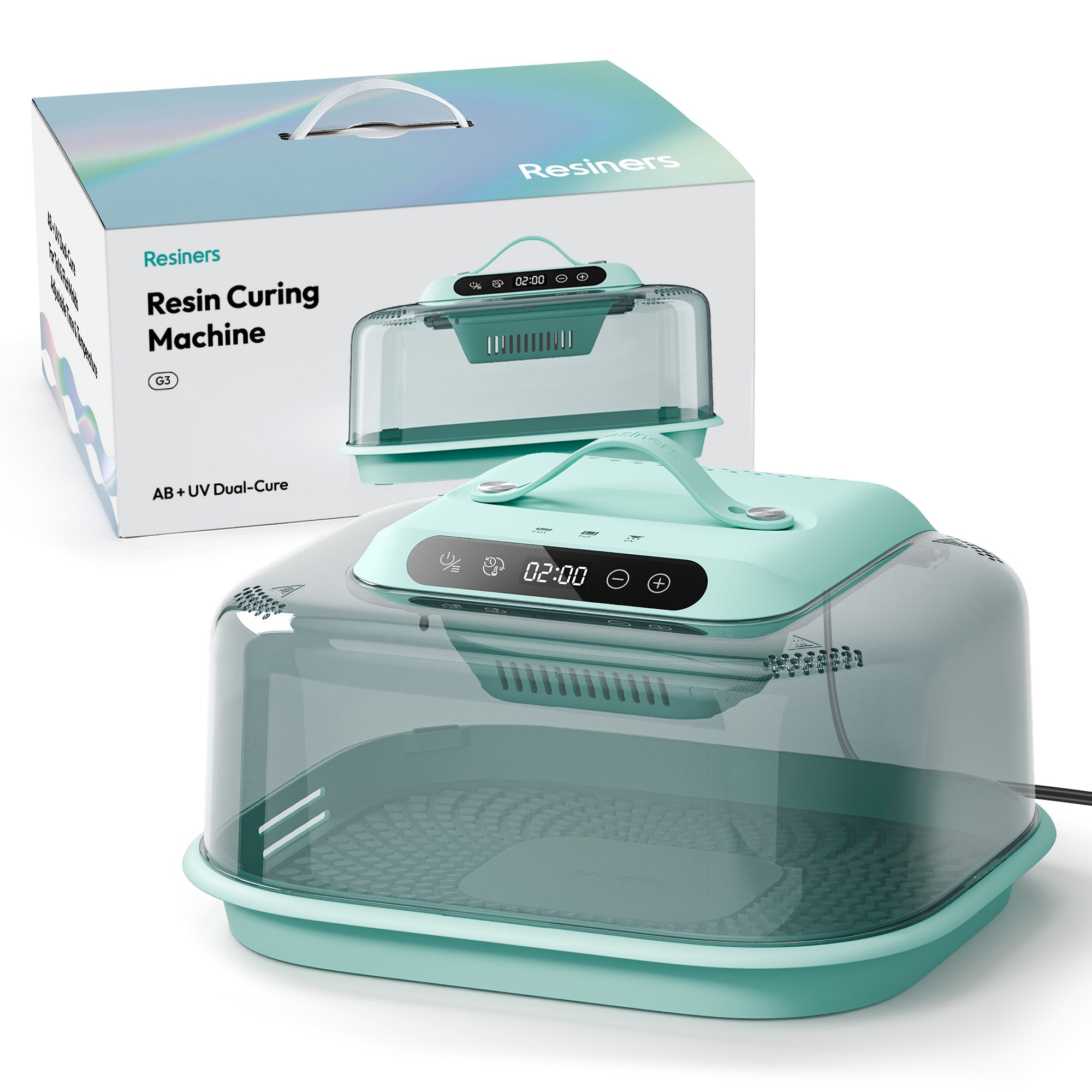

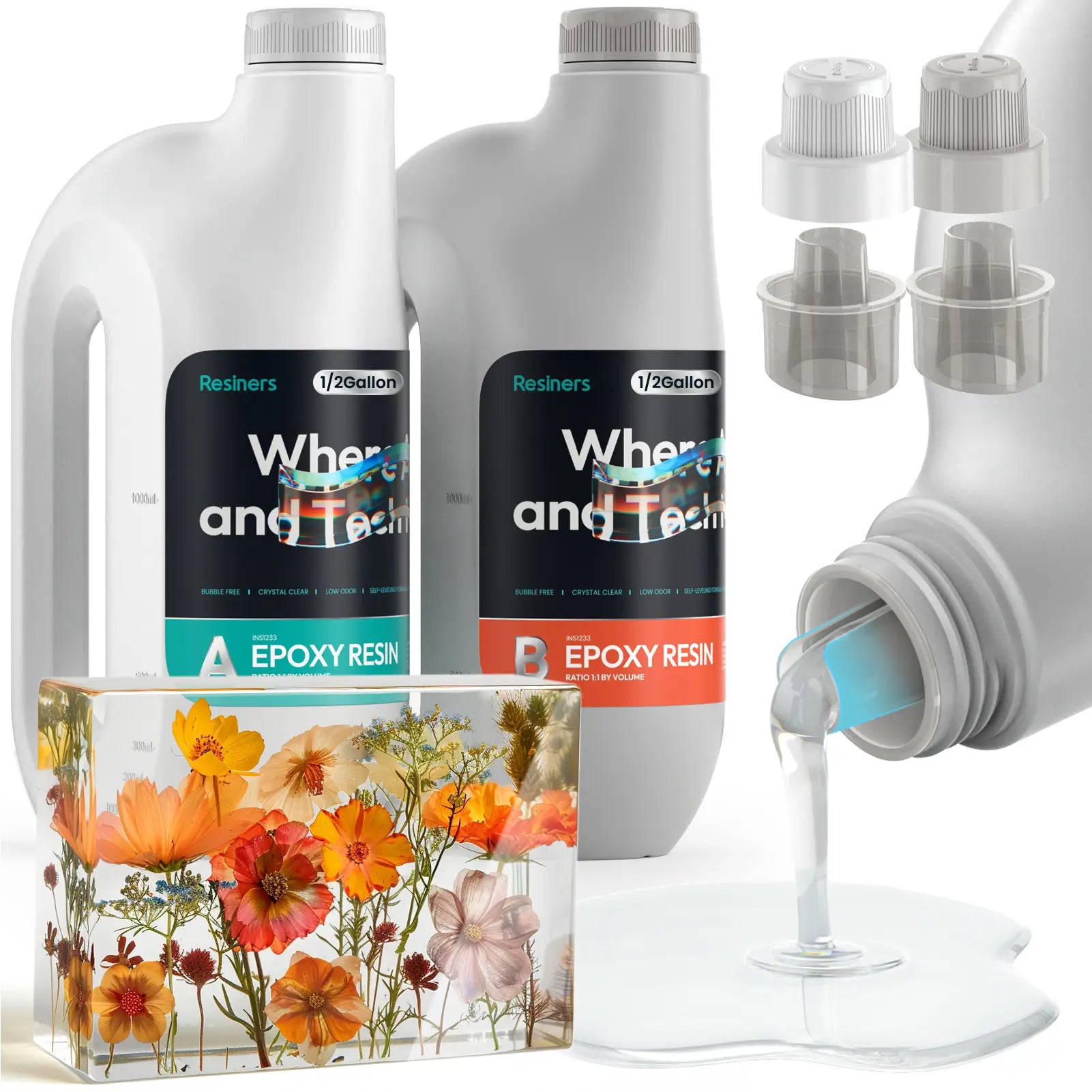
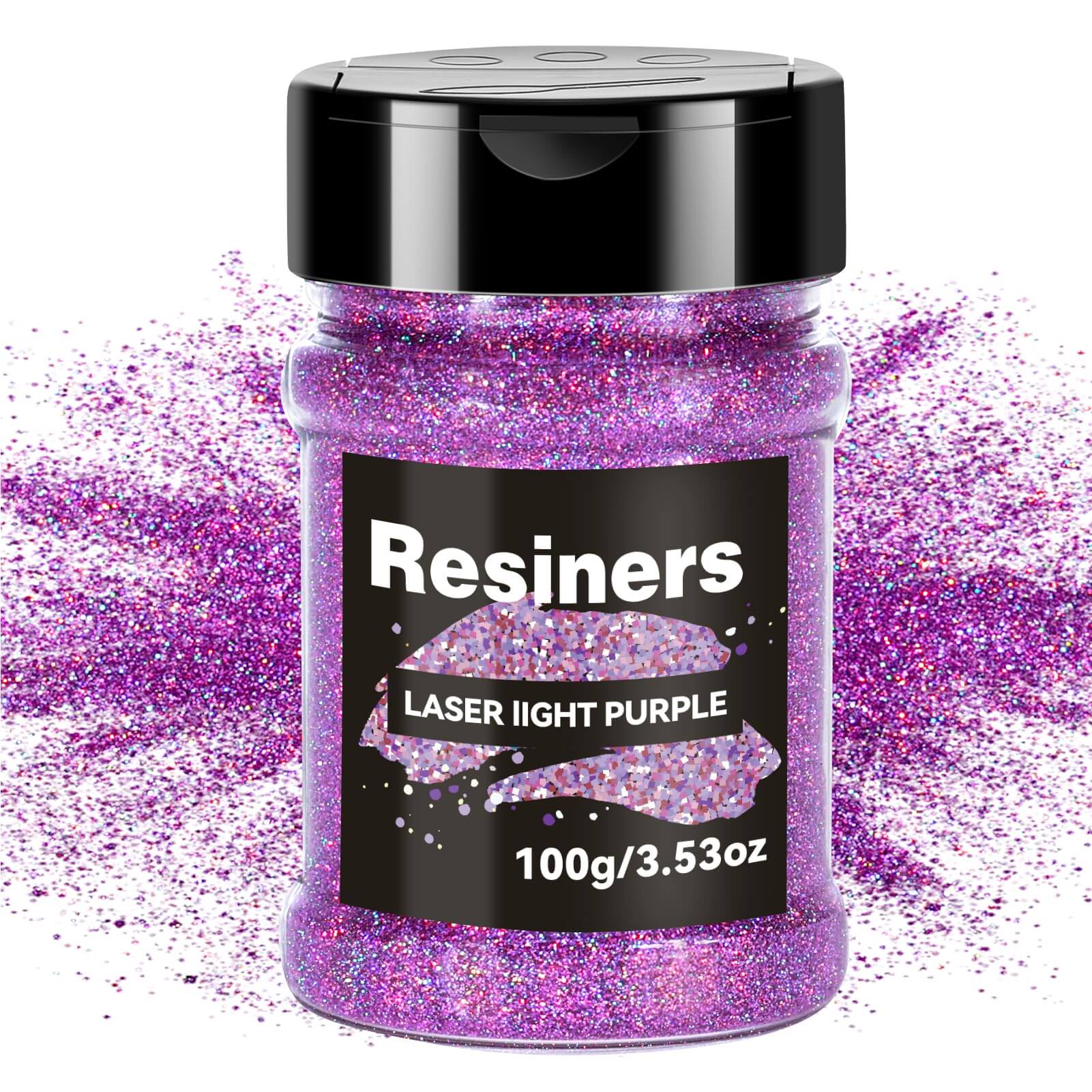
Commenta
Questo sito è protetto da hCaptcha e applica le Norme sulla privacy e i Termini di servizio di hCaptcha.